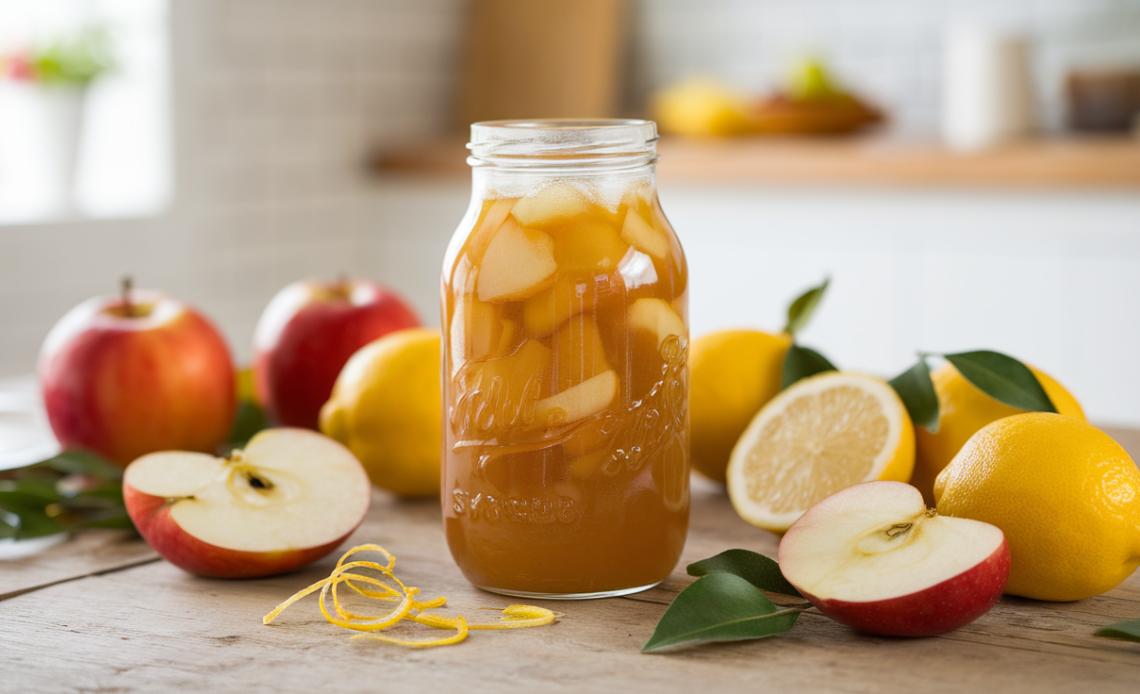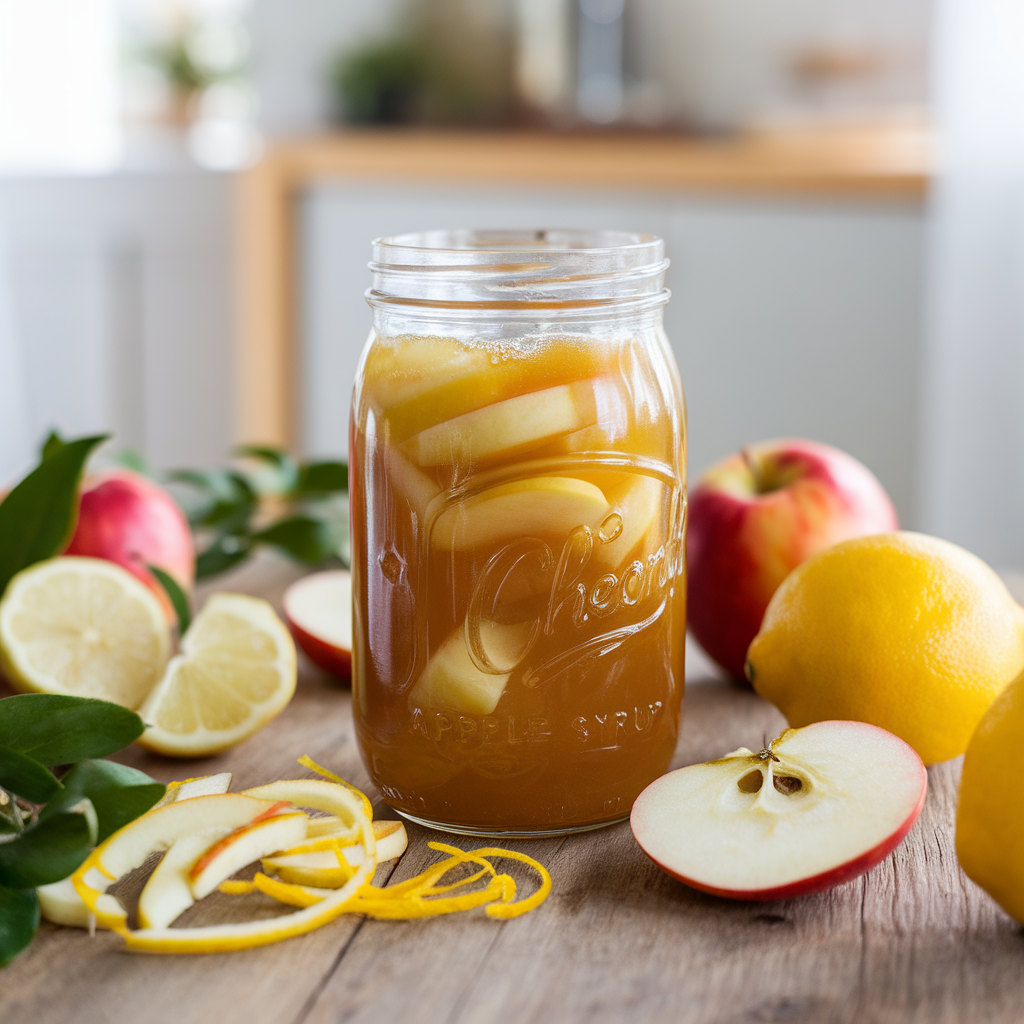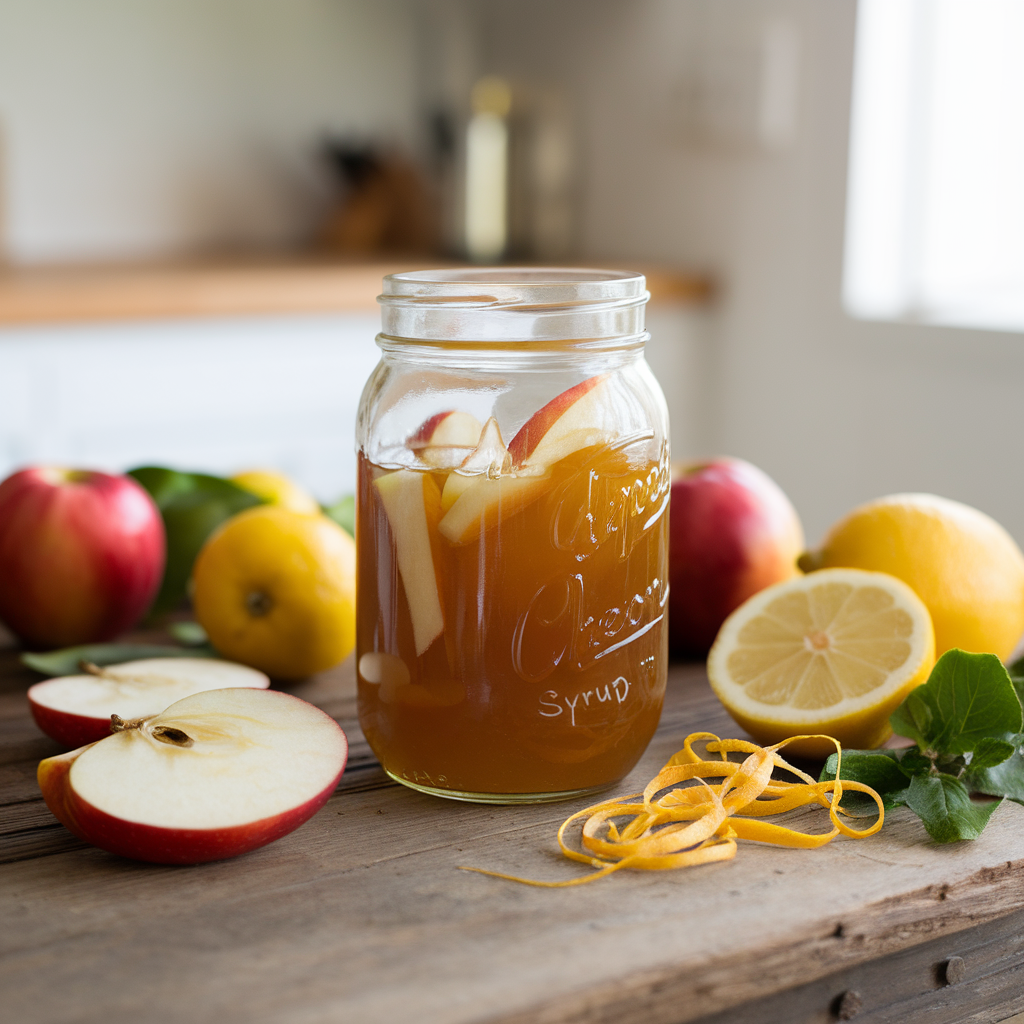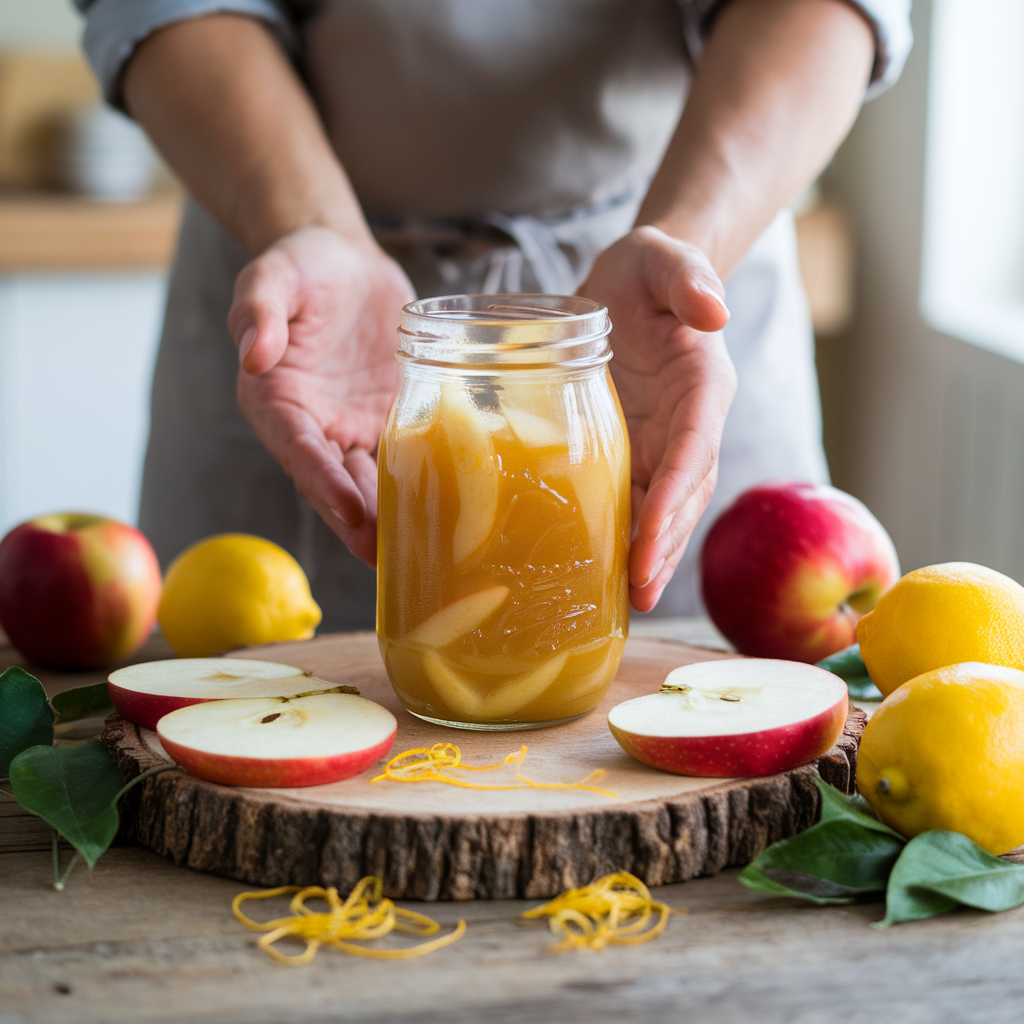
Cheong, a traditional Korean syrup, has been cherished for its tangy-sweet flavor and versatile uses in both sweet and savory dishes. Originating from fermented fruits, cheong is made through a process that brings out the natural flavors of the ingredients, creating a perfect blend of sweetness and complexity. The Apple-Lemon Cheong is an innovative twist on this classic, combining the crisp sweetness of apples with the citrusy zing of lemons. This syrup is perfect for drizzling over desserts, adding a touch of sweetness to savory dishes, or simply enjoying as a refreshing drink. In this article, we will guide you through the process of making Apple-Lemon Cheong, explore its many uses, and provide tips for storing and fermenting it properly.
What is Cheong?
Cheong is a fermented fruit syrup that is primarily used in Korean cuisine. Traditionally, it is made by layering fruits and sugar, allowing the mixture to ferment and develop a rich, natural sweetness over time. The fermentation process not only enhances the flavors of the fruits but also makes the syrup easier to digest. Common fruits used in cheong recipes include plums, pears, and yuzu, but the Apple-Lemon Cheong offers a unique twist, balancing the mild sweetness of apples with the tartness of lemons.
Fermented foods have gained popularity in recent years due to their health benefits, including improved gut health and enhanced immune function. The fermentation process of Apple-Lemon Cheong allows the natural probiotics from the fruit to thrive, making it a great addition to your diet if you’re looking to boost your digestive health.
Ingredients for Apple-Lemon Cheong
To make Apple-Lemon Cheong, you’ll need the following ingredients:
- 3 large apples (preferably organic)
- 2 medium-sized lemons
- 1 cup of honey or brown sugar (for a healthier alternative, you can opt for maple syrup)
- 2 tablespoons of rice vinegar (optional, to add a mild tangy flavor)
- 1 cup of water
- 1 fermenting jar (preferably a glass jar with a tight lid or a fermenting jar)
- Fermenting weights (optional, but highly recommended to keep the fruit submerged)
You’ll also need some basic kitchen tools such as a sharp knife, a cutting board, and a spoon for mixing.

Step-by-Step Instructions for Making Apple-Lemon Cheong
Step 1: Prepare the Apples and Lemons
Begin by washing the apples and lemons thoroughly. Since the peels are an essential part of the flavor profile of the cheong, make sure to keep them intact. Slice the apples into thin, bite-sized pieces. There’s no need to peel the apples, as the skin contains natural pectin, which helps thicken the syrup and enrich its flavor.
Next, slice the lemons. You can choose to peel the lemons, but leaving the peel on will intensify the lemony aroma and add a zesty punch to the syrup. Remove any seeds from the lemon slices, as they can cause bitterness in the syrup.
Step 2: Layer the Fruit and Sweetener
In a clean fermenting jar, begin layering the apple slices and lemon slices. Start with a layer of apple slices, followed by a sprinkling of sugar (or your chosen sweetener). Repeat this process, ensuring that the fruit is evenly distributed throughout the jar. The goal is to create layers of fruit and sugar that will eventually create a thick, syrupy consistency as they ferment.
If you’re using honey, drizzle it between the layers of fruit, but ensure that the fruit slices are well coated. Honey is a natural preservative, which will help extend the shelf life of your cheong and give it a smoother, more luxurious texture. If you prefer a stronger sweet flavor, you can increase the amount of honey or sugar.
Step 3: Add the Water and Rice Vinegar
Once your layers of fruit and sweetener are ready, pour 1 cup of water into the jar. This will help dissolve the sugar and create a more liquid consistency. If you’re using rice vinegar, add it at this point as well. The vinegar will add a mild tanginess to balance the sweetness, but it’s optional. Stir the mixture gently to ensure that the ingredients are well combined.

Step 4: Seal the Jar and Begin Fermentation
Once everything is mixed, cover the jar with a lid. You can also use a piece of cloth or parchment paper to seal the jar if you prefer, but make sure the jar is tightly closed to avoid contamination.
To aid in the fermentation process, place fermenting weights (or a small clean rock) on top of the fruit to keep the fruit submerged in the syrup. This is crucial to prevent the fruit from being exposed to air, which can cause mold growth. The weight will also help the syrup become more concentrated over time.
Store the jar in a warm, dark place, like a cupboard or pantry. For the best results, allow the Apple-Lemon Cheong to ferment for about 3-5 days, checking it occasionally to ensure that it’s fermenting properly. During this time, you’ll begin to notice the syrup thickening and the flavors deepening as the fruit and sugar meld together.
Step 5: Strain and Store the Cheong
After 3-5 days, check the consistency and flavor of your Apple-Lemon Cheong. If you like it thicker, you can leave it for a few more days to ferment further. Once the syrup has reached your desired consistency, strain out the fruit slices and any solids using a fine mesh strainer or cheesecloth. You’ll be left with a smooth, amber-colored syrup.
Transfer the strained syrup into clean, sterilized bottles or jars for storage. If you’re planning to use it right away, it’s ready for consumption. However, for longer shelf life, store the syrup in the fridge. The cheong will continue to develop in flavor as it sits, and the fermentation process will slow down in the colder temperatures.
How to Use Apple-Lemon Cheong
Apple-Lemon Cheong is incredibly versatile and can be used in various ways:
- As a Drink: Mix a tablespoon of cheong with cold water for a refreshing drink. You can also add ice cubes and a sprig of mint for extra freshness.
- As a Topping: Drizzle the syrup over pancakes, waffles, or yogurt. It’s also delicious over ice cream, fruit salads, or porridge for a sweet, tangy kick.
- In Savory Dishes: The sweet and tart flavor of Apple-Lemon Cheong can add a unique touch to savory dishes. Use it as a glaze for grilled meats like chicken or pork, or drizzle it over roasted vegetables to create a sweet-savory contrast.
- As a Marinade: Apple-Lemon Cheong can serve as an excellent marinade for meats, especially when combined with soy sauce, garlic, and sesame oil. The syrup’s sweetness will help tenderize the meat, and the lemon’s acidity will brighten the flavors.
- In Side Dishes: Mix Apple-Lemon Cheong into salad dressings, or combine it with vinegar and olive oil for a tangy, fruity vinaigrette. You can also stir it into cooked grains like rice or quinoa for an added layer of flavor.

The Benefits of Fermented Foods
Fermented foods like Apple-Lemon Cheong offer a range of health benefits, making them a great addition to your diet. The fermentation process introduces beneficial probiotics, which help support gut health and improve digestion. Consuming fermented foods regularly can also boost your immune system, enhance nutrient absorption, and promote a healthy gut microbiome.
In addition to probiotics, Apple-Lemon Cheong provides essential vitamins and antioxidants from the apples and lemons. The natural sugars in the syrup are more easily digestible than refined sugars, making it a healthier alternative to store-bought sweeteners.
Storing and Preserving Your Apple-Lemon Cheong
To maximize the shelf life of your cheong, always store it in an airtight container in the refrigerator. The syrup will last for several months, allowing you to enjoy its flavors throughout the year. Make sure to check the syrup regularly for any signs of spoilage, such as mold growth or an off smell.
When storing your cheong, consider labeling the jar with the date of fermentation so you can track how long it has been sitting. If you notice any changes in the syrup’s texture or taste, it may be a sign that it’s time to make a fresh batch.
Conclusion
Apple-Lemon Cheong is a delightful, easy-to-make syrup that blends the sweetness of apples with the tartness of lemons. Whether you use it in sweet or savory dishes, the versatility and rich flavor of this fermented syrup will elevate your cooking. With its health benefits and ability to enhance any dish, it’s a great way to incorporate fermented foods into your diet. So, gather your ingredients, start fermenting, and enjoy the unique and tangy taste of Apple-Lemon Cheong!




